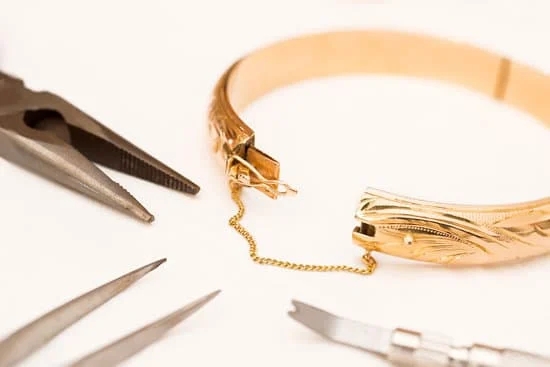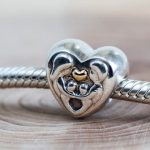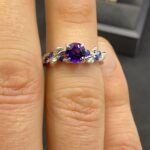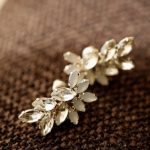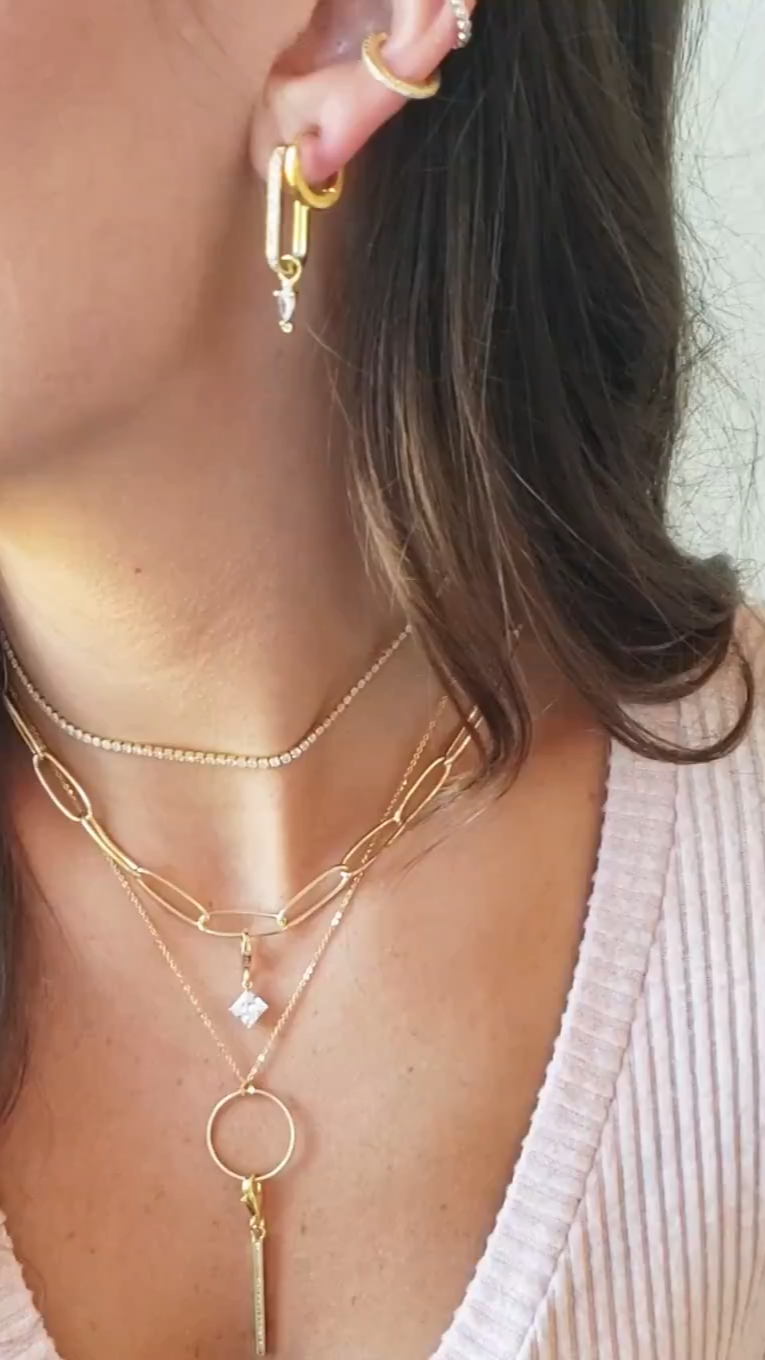Bead embroidery jewelry is a beautiful and intricate art form that has been practiced for centuries. In this article, we will delve into the world of bead embroidery, exploring the ancient techniques and modern adaptations used to create stunning pieces of jewelry. Whether you’re a beginner looking to learn the basics or an experienced beader seeking new inspiration, this guide will provide you with the knowledge and resources needed to create your own bead embroidery jewelry.
Throughout history, beads have been used as decorative elements in various cultures around the world. Bead embroidery allows for endless creativity and expression, making it a popular craft for jewelry makers and artisans. With the right materials and tools, anyone can learn how to bead embroidery jewelry and produce unique, one-of-a-kind pieces.
In this introductory section, we will provide an overview of the basics of bead embroidery, including the materials and tools needed to get started. We will also discuss the history and cultural significance of bead embroidery, setting the stage for a deeper exploration into this timeless art form. So whether you’re a seasoned pro or a curious beginner, join us as we embark on a journey to unravel the secrets of bead embroidery jewelry.
Understanding the Basics
When it comes to creating stunning bead embroidery jewelry, having the right materials and tools is essential. The basic materials needed for bead embroidery include a beading needle, beading thread, fabric or backing material, and of course, beads. Beads come in various sizes, shapes, and materials such as glass, plastic, metal, and seed beads. Depending on your design and preference, you can choose from a wide selection of beads available in craft stores or online.
In addition to materials, having the right tools is crucial for successful bead embroidery projects. Some essential tools include embroidery scissors for cutting thread and fabric, a beading mat to prevent beads from rolling away, and a hoop to keep the fabric taut while working. It’s also helpful to have a pair of jewelry-making pliers on hand for attaching clasps or finishing off the ends of your bead embroidery piece.
For those new to bead embroidery jewelry making, understanding the basics of materials and tools is the first step in creating beautiful and unique pieces. With the right materials and tools at your disposal, you’ll be well-equipped to bring your creative visions to life through bead embroidery.
| Materials | Tools |
|---|---|
| Beading needle | Embroidery scissors |
| Beads (glass, plastic, metal) | Beading mat |
| Beading thread | Hoop |
| Fabric or backing material | Jewelry-making pliers |
Getting Started
Preparing Your Materials
Before you begin your bead embroidery project, it’s important to gather all the necessary materials and tools. This includes a beading needle, embroidery hoop, beading thread, fabric for backing, and of course, beads. It’s also helpful to have a pair of small scissors on hand for cutting the thread. Take some time to organize your materials and set them up in a comfortable workspace.
Starting With Basic Stitches
One of the most common stitches used in bead embroidery is the backstitch. This stitch creates a solid line of beads and is great for outlining shapes or creating borders. Another essential stitch is the seed stitch, which involves sewing individual beads onto the fabric in a random pattern. Once you have mastered these basic stitches, you can move on to more advanced techniques such as fringe stitching and adding dimensional elements to your designs.
Creating Patterns and Designs
When starting your bead embroidery project, you may want to sketch out a rough design on paper before transferring it to the fabric. This will give you a clear idea of where you want certain beads to go and how your overall design will look. You can also experiment with different color combinations and bead arrangements to achieve the look you desire.
Remember that practice makes perfect when it comes to bead embroidery, so don’t be afraid to make mistakes and learn from them. With time and patience, you will become more proficient in creating beautiful bead embroidery jewelry pieces.
Choosing the Right Beads
When it comes to creating stunning bead embroidery jewelry, choosing the right beads is crucial. The type, size, color, and texture of the beads can make a significant impact on the overall look and feel of your jewelry piece. Here’s a comprehensive guide to help you select the perfect beads for your bead embroidery projects.
First and foremost, consider the type of bead that best suits your design. There are various options to choose from, including seed beads, bugle beads, crystal beads, glass beads, gemstone beads, and more. Each type of bead offers different characteristics that can enhance your embroidery work in unique ways.
Next, think about the color scheme you want to incorporate into your jewelry piece. Whether you’re creating a vibrant and colorful design or something more subtle and monochromatic, selecting the right colors will help bring your vision to life. You can also experiment with different finishes such as matte, shiny, metallic, or iridescent to add dimension and visual interest to your bead embroidery.
In addition to type and color, consider the size and shape of the beads you’ll be using. Different sizes and shapes can create different effects in your bead embroidery designs. Mixing various bead sizes can add depth and texture to your piece while using uniform sizes can result in a more polished and structured look.
By understanding how to bead embroidery jewelry effectively by choosing the right beads based on their type, color scheme as well as size and shape will help you create beautiful and unique pieces that truly stand out.
| Bead Selection Considerations | Description |
|---|---|
| Type of Bead | Consider seed beads,bugle beads,glassbeads,gemstones etc. |
| Color Scheme | Think about adding vibrant colors or experimenting with different finishes. |
| Bead Size and Shape | Different sizes create different effects; mix them for depth or use uniform sizes for structure. |
Design Inspiration
When it comes to creating beautiful bead embroidery jewelry, finding design inspiration is crucial. Drawing from nature, culture, and art can help you create unique and eye-catching pieces that stand out. Here are some sources of inspiration to consider when designing your bead embroidery jewelry:
- Nature: Take a walk in the great outdoors and observe the colors, shapes, and patterns found in plants, flowers, and landscapes. Consider incorporating the beauty of nature into your designs by using floral motifs, leaf shapes, or natural color palettes.
- Culture: Explore different cultures and their traditional jewelry designs. Look for inspiration in the intricate patterns of Native American beadwork, the vibrant colors of African tribal jewelry, or the delicate details of Asian embroidery. Incorporating elements from different cultures can add depth and meaning to your creations.
- Art: Visit museums or galleries to immerse yourself in different art movements and styles. Draw inspiration from paintings, sculptures, or textiles to create bead embroidery pieces that reflect artistic creativity. Whether it’s the bold lines of modern art or the soft curves of impressionist paintings, there are endless possibilities for translating art into jewelry.
By tapping into these diverse sources of inspiration, you can infuse creativity and originality into your bead embroidery designs. Whether you’re drawn to the organic beauty of nature, the rich traditions of different cultures, or the boundless imagination of art, there’s always something new to explore and incorporate into your jewelry-making process.
Incorporating these inspirations into your bead embroidery work will not only make your pieces visually compelling but also tell a story that resonates with others. The next time you’re feeling stuck on a design idea for your jewelry project remember to look around you – whether up close in nature’s details or afar within various cultural arts – for endless possibilities.
Remember that each piece you create is like a mini artwork created with love.
Tips and Tricks
When it comes to perfecting your bead embroidery jewelry, there are some expert tips and tricks that can take your creations to the next level. From mastering intricate stitches to troubleshooting common issues, here are some valuable insights for anyone looking to enhance their bead embroidery skills.
Mastering Stitch Techniques
One of the keys to creating beautiful bead embroidery jewelry is mastering a variety of stitch techniques. From basic stitches like the backstitch and running stitch to more advanced techniques like the brick stitch and peyote stitch, each stitch adds its own unique texture and dimension to your designs. Take the time to practice each stitch and experiment with different thread tensions and bead sizes to see how they can be used to achieve different effects in your work.
Choosing the Right Foundation
The foundation on which you bead your embroidery plays a crucial role in the final outcome of your jewelry piece. Whether you prefer working on fabric, leather, or felt, it’s important to choose a sturdy foundation that can support the weight of your beads and provide a stable surface for stitching. Consider experimenting with different materials to see how they affect the overall look and feel of your finished pieces.
Adding Dimension With Layering
Layering is a technique that can add depth and dimension to your bead embroidery jewelry. By strategically layering beads on top of each other or adding additional layers of fabric or felt, you can create eye-catching 3D effects in your designs. Experiment with different ways of layering beads and materials to see how it can elevate the visual impact of your jewelry pieces.
By incorporating these expert tips and tricks into your bead embroidery practice, you can take your jewelry-making skills to new heights. With patience, practice, and a willingness to experiment, you’ll be able to perfect the art of creating stunning bead embroidery jewelry pieces that showcase your creativity and talent.
Finishing Touches
After spending hours meticulously crafting your bead embroidery jewelry pieces, it’s time to add the final finishing touches to complete your masterpiece. Adding clasps, findings, and backings to your bead embroidery pieces not only enhances their functionality but also adds to their aesthetic appeal. Whether you’re creating a necklace, bracelet, or earrings, choosing the right type of closure and backing is essential for ensuring that your jewelry is wearable and durable.
When it comes to adding clasps to your bead embroidery jewelry, there are several options to choose from. Some popular choices include lobster clasps, spring ring clasps, toggle clasps, and magnetic clasps. Each type of clasp offers its own unique benefits in terms of security, ease of use, and style. Consider the weight of your jewelry piece and the level of dexterity needed to operate the clasp when making your selection.
In addition to choosing the right type of clasp for your bead embroidery jewelry, selecting the appropriate findings is equally important. Findings such as jump rings, ear wires, and head pins serve as essential components for attaching beads and embellishments to your jewelry piece.
It’s crucial to match the metal color and finish of these findings with the rest of your design for a cohesive look. Furthermore, using high-quality findings will ensure that your bead embroidery jewelry remains strong and secure over time.
Showcasing Your Work
In conclusion, bead embroidery jewelry is a beautiful and versatile art form that allows for endless creativity and personal expression. By mastering the techniques and understanding the basics of materials and tools needed for bead embroidery, anyone can create stunning pieces of jewelry.
Choosing the right beads and drawing inspiration from nature, culture, and art can add depth and meaning to your designs. With expert advice for perfecting your bead embroidery jewelry and adding finishing touches, you can create pieces that are not only visually appealing but also durable.
After putting time and effort into creating your bead embroidery jewelry, it’s important to showcase your work. Whether you choose to display and sell your pieces online or at craft fairs, there are numerous opportunities to share your creations with the world.
Online platforms allow for a wider reach and the ability to connect with customers from all over the world, while craft fairs provide a more personal interaction with potential buyers. Whichever avenue you choose, be sure to present your pieces in a way that highlights their beauty and craftsmanship.
Frequently Asked Questions
How to Do Bead Embroidery Step by Step?
Bead embroidery is a beautiful and intricate craft that involves stitching beads onto fabric to create decorative designs. To start, gather your materials including fabric, beads, needle, and thread. Then, choose a design and transfer it onto the fabric.
Next, secure the fabric in an embroidery hoop to keep it taut. Start stitching the beads onto the fabric using a variety of techniques like backstitch, running stitch, or couching. Finally, finish off your bead embroidery by tying off any loose threads and removing it from the hoop.
How Do You Secure Bead Embroidery?
Securing bead embroidery is essential to ensuring that your hard work doesn’t come undone. One way to secure bead embroidery is by carefully knotting and weaving the thread through the back of the stitches before trimming it close to the fabric.
Another method is to use a small amount of clear-drying glue on knots or thread ends for added strength and security without affecting the appearance of your work.
What Kind of Beads Do You Use for Embroidery?
When choosing beads for embroidery, there are many different types that can be used depending on the desired look and feel of your design. Seed beads are often popular for their small size and uniform shape, while bugle beads add length and dimension to your embroidery.
Other options include glass beads, crystal beads, metal beads, or even natural materials like pearls or gemstones. Ultimately, the type of bead you use will depend on your design aesthetic and personal preference for texture and color.

Welcome to my jewelry blog! My name is Sarah and I am the owner of this blog.
I love making jewelry and sharing my creations with others.
So whether you’re someone who loves wearing jewelry yourself or simply enjoys learning about it, be sure to check out my blog for insightful posts on everything related to this exciting topic!

